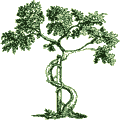
|
|||||||
Osteochondrosis / Osteochondritis
Osteochondrosis, sometimes called osteochondritis, is a condition of defective bone formation in the epiphysis or growing part of the skeleton. No one knows the exact cause, although it is probably due to circulation disturbance to that part of the bone.
Osteochondrosis can occur in many areas of the body, but the more common examples are as follows.
- Freibergís disease occurs in the head of the metatarsals of the foot, usually the 2nd or 3rd metatarsal, usually between the ages of 12 to 15, and more commonly in a girl. The patient presents with pain with walking and is tender over the metatarsal head involved. X-rays show collapse of the metatarsal head. Treatment includes use of metatarsal pad to relieve pressure on the area while walking. Sometimes, a piece of the involved bone gets loose, and becomes a loose body in the joint, necessitating surgical excision. Eventually the metatarsal head reforms, and the pain resolves, although the head is usually a little flattened.
- Kienbockís disease occurs in the lunate of the hand. It usually occurs in patients age 20 to 30 years of age, more commonly in males.
- Kohlerís disease occurs in the navicular bone of the foot, and occurs in children between 3 and 9 years of age. The child presents with a painful foot, and diagnosed on X-rays which show a collapse of the navicular bone. Treatment consists of using an arch support, which relieves the pain. Total restoration usually occurs over a period of 12 to 18 months.
- Legg-Calve-Perthes' disease occurs in the hip between the ages of 6 to 9 years of age, more commonly in boys. Although the less severe forms recover with no problems, the more severe forms in older boys can lead on to serious disability.
- Osgood-Schlatter disease occurs in the tibial tubercle apophysis at the insertion of the patellar tendon. It occurs between the ages of 10 to 15, more commonly in boys. It is probably a form of overuse syndrome, due to repeated avulsion stress on the tibial tubercle. X-rays are usually normal, and the diagnosis is usually made clinically by localized tenderness over the tibial tubercle. Treatment consists of rest for a few days and use of non-steroidal anti-inflammatory medication. An Osgood-Shlatter brace to protect the patellar tendon and tibial tubercle may be used for sports. There is usually no need to restrict activities, as long as the child can tolerate the pain. No long term disability is expected, although there have been reports of cases where the tibial tubercle stays prominent and even tender long after maturation.
- Osteochondritis dissecans of the knee occurs usually on the lateral part of the medial femoral condyle, usually in the early teenage years. The etiology is probably due to repeated trauma and vascular impairment to the area of the bone. The patient presents with pain in the knee, and diagnosed on X-rays. Treatment consists of casting and rest. If the involved bone starts to separate out, surgical pinning may be needed.
- Osteochondritis dissecans of the elbow occurs in the capitellum as well as the medial condyle and epicondyle. Unlike Pannerís disease, it may form loose bodies and cause long-term disability. It occurs in an older age group than in Pannerís disease, occurring usually in the early teens. Treatment consists of strictly enforced rest for the elbow to prevent long-term problems.
- Pannerís disease occurs in the capitellum of the distal humerus at the elbow, and usually between the ages of 5 and 10, more commonly in boys. The patient presents with pain and inability to extend the elbow fully after a trivial injury. X-rays are diagnostic, and treatment consists of using a sling and restriction from strenuous activity involving the elbow. The bone reconstitutes after a year or two, and the patient usually resumes full function.
- Severís disease occurs in the heels, at the insertion of the Achilles tendons, and may be bilateral. It occurs between the ages of 10 to 12 in boys, and younger in girls. The child complains of pain in the heel with running, and is tender over the heel at the insertion of the Achilles tendon. X-rays are not diagnostic, and treatment consists of using heel lifts to relieve the stress on the heel. Spontaneous resolution is the usual course.
- Sinding-Larsen-Johannson disease occurs at the inferior pole of the patella, at the proximal insertion of the patellar tendon. It occurs in the same age group as in Osgood-Sclatter disease, between 10 to 15 years of age. Etiology is probably similar, and so is the outcome. No long-term disability is expected, and treatment is symptomatic only.
NOTICE: The information presented is for your information only, and not a substitute for the medical advice of a qualified physician. Neither the author nor the publisher will be responsible for any harm or injury resulting from interpretations of the materials in this article.
Questions
or comments? Post your thoughts in the Orthoseek
Message Forum!
Find a pediatric orthopedic surgeon
in an area near you.
Home | About Us | Orthopaedic Topics | Message Forum
![]()
Comments, questions, or suggestions are welcome. Please
contact us using this form.